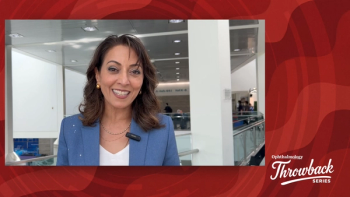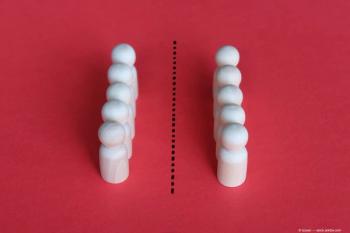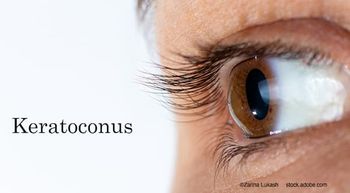
Exploring pressure-lowering effect of ONO-9054
ONO-9054, a drug being developed for the treatment of ocular hypertension and primary open angle glaucoma, showed promising results in a small, randomized trial. Post-hoc analysis of the results showed that nearly 90% of patents who had received doses of 10 µg/mL or higher had IOP measurements of 18 mm Hg or lower following treatment.
Take-home:
ONO-9054, a drug being developed for the treatment of ocular hypertension and primary open angle glaucoma, showed promising results in a small, randomized trial. Post-hoc analysis of the results showed that nearly 90% of patents who had received doses of 10 µg/mL or higher had IOP measurements of 18 mm Hg or lower following treatment.
By Nancy Groves; Reviewed by Alon Harris, MD, PhD, FARVO
Indianapolis-Post hoc analysis of the results of a small, randomized, double-masked, placebo controlled clinical trial of ONO-9054, a drug being developed for the treatment of ocular hypertension (OHT) and primary open-angle glaucoma (POAG), showed that all subjects who received the active medication experienced a reduction in IOP to 18 mm Hg or less after 14 days of dosing.
At higher doses of the drug, IOPs of 16 mm Hg or less were more frequent.
“It’s a unique drug in terms of looking for new avenues in lowing intraocular pressure because of the potential pathways that it uses,” said Alon Harris, MD, PhD, FARVO, professor of ophthalmology, Indiana University School of Medicine, Indianapolis. He is also director of clinical research at the Eugene and Marilyn Glick Eye Institute and professor of cellular physiology.
Dr. Harris was the first author of a poster on the trial presented at the annual meeting of the Association for Research in Vision and Ophthalmology. He explained that ONO-9054 is a dual FP/EP3 prostaglandin receptor agonist and an isopropyl ester pro-drug of the free acid ONO-AG-367 with ocular hypertensive activity.
The dose escalation trial enrolled 48 subjects with bilateral OHT or early POAG. The subjects were randomized 1:3 to receive placebo or ONO-9054 in doses of 3, 10, 20, or 30 µg/mL. The study drug was administered once daily in both eyes on day 1 and on days 5-18. IOP measurements were performed at baseline and on days 18 and 19. The post hoc analysis evaluated the magnitude of IOP and proportion of subjects who reached targets by measuring the mean and standard deviation of IOP on days 18 and 19.
“The IOP was sustained at a minimum of 25% below baseline in all groups, and IOP was sustained up to 33 hours post-dose in the 10- and 30-µg/mL dose groups, so the 10 and 30 µg/mL seem to be very potent dosages for lowering the IOP,” Dr. Harris said. “In addition, the analysis showed that in doses above 10 µg/mL, approximately 80% to 90% of the IOP measurements were 18 mm Hg or lower. That’s a very important cutoff, and yet at 14 days, we’re talking about 16 mm Hg,” he continued. “Over 75% of the subjects in the 10 µg/mL dose group reached pressures of ≤16 mm Hg, and it was sustained for more than 12 hours.”
At baseline, mean IOP ranged from 23.3±0.6 to 25.2±2±5 mm Hg. After treatment, 78% to 89% of the pressures measured were 18 mm Hg or lower among subjects who had been randomized to doses above 10 µg/mL.
All patients receiving the drug experienced a reduction in IOP to 18 mm/Hg or less after 14 days of dosing. More than half of the responses ranged lower than 18 mm/Hg at all time points in the doses above 10 µg/mL. In the 10 µg/mL dose group, more than 50% of the responses ranged lower than 16 mm/Hg, or 67.5% lower than baseline, at all time points. Further, 20% of all subjects receiving doses of 10, 20, and 30 µg/mL had IOP measurements of 15 mm/Hg or lower at some point in the study.
The analysis also showed that at 8 a.m. after 14 days of dosing, the numbers of patients who had IOP measurements of no more than 16 mm Hg were higher in the cohorts receiving doses above 10 µg/mL. The numbers were 0/12 in the placebo group; 1/9 (11.1%) in 3 µg/mL; 7/9 (77.8%) in 10 µg/mL; 4/9 (44.4%) in 20 µg/mL; and 6/9 (66.7%) in the 30 µg/mL cohort. On day 18, after 14 days of consecutive dosing, all the subjects in the placebo group had an IOP of 18 mm/Hg or higher.
ONO-9054 is a promising drug, Dr. Harris concluded, while acknowledging that the clinical trials process is still in very early stages. An earlier report on the hypotensive effect of the drug was given at the 2013 meeting of the American Academy of Ophthalmology by Serle et al.
Alon Harris, MD, PhD, FARVO
This article was adapted from a poster presentation at the 2014 meeting of the Association for Research in Vision and Ophthalmology. Dr. Harris is a consultant for Ono Pharmaceuticals.
Newsletter
Don’t miss out—get Ophthalmology Times updates on the latest clinical advancements and expert interviews, straight to your inbox.


















































.png)


